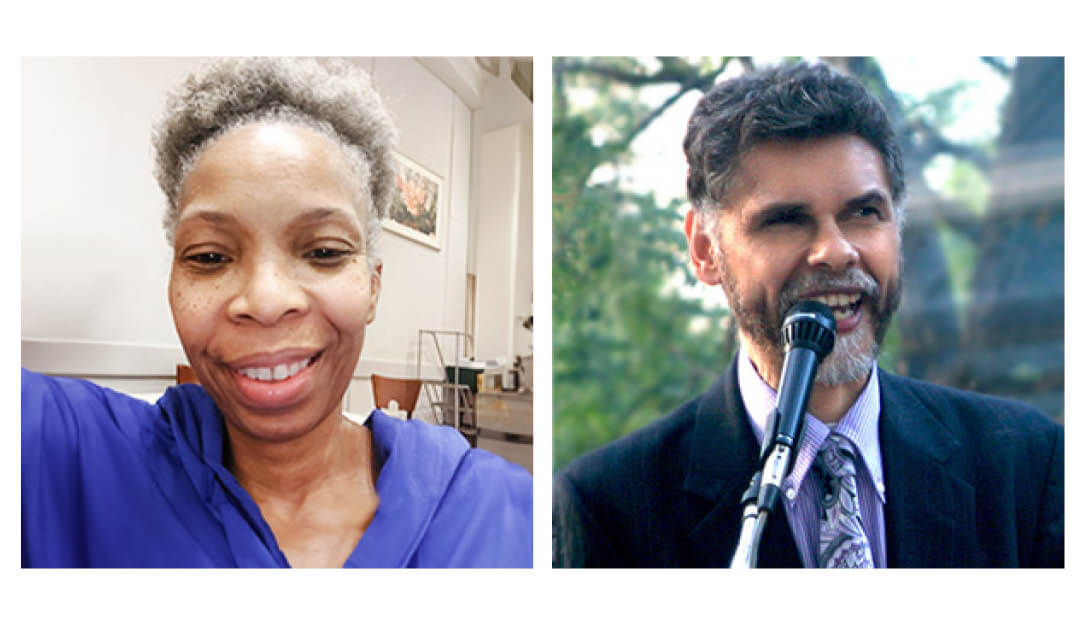Two Cardiac Rehabilitation Patients Get a Second Chance
Patients receive innovative, high quality care in The New Jewish Home’s outstanding Cardiac Rehabilitation program, where the focus is not only on recovery, but also on education.
Richard Ulfik came to The New Jewish Home from the hospital after undergoing surgery to implant a new LVAD (left ventricular assist device) in his heart. Lorrie James arrived after a mitral valve clip procedure. Both Richard and Lorrie needed to regain their strength and learn to navigate new challenges so they could return to the independent, vibrant lives they had previously enjoyed.
For both of them, and many other patients recovering from cardiac events or surgeries, The New Jewish Home was the right place.
Established in 2014, The New Jewish Home’s Cardiac Rehabilitation program is accredited by the Joint Commission and is recognized as a leader in the field of cardiac rehabilitation. Utilizing the latest techniques and equipment, the program provides patients with the resources they need to recover, improve their overall cardiovascular health, strengthen the heart muscle, reduce stress, and decrease the risk of future cardiac events.
For each patient, the rehabilitation team develops a customized treatment plan, including physical therapy, occupational therapy, and, if necessary, speech and swallowing therapy. Therapists guide each patient through a variety of exercise programs, including aerobics, strength training, and yoga, to increase their strength and endurance. Patients and their families also receive counseling and education to help them understand and manage their cardiac conditions.
Richard Ulfik was already a successful musician and composer when he founded WE, The World, a non-profit organization that brings people and organizations together to work towards creating a peaceful, caring, sustainable world. But he had to step away from that passion project when he had a heart attack in early 2022, the beginning of a health crisis that lasted five months. Though he was placed on the heart transplant list, his condition deteriorated to the point that he couldn’t walk any longer, and his doctor recommended a heart pump instead. Soon after, he received his LVAD.
Once he arrived at The New Jewish Home, he said, “I was very focused on recovery.” Richard’s two physical therapists visited his room daily for over a month to work with him and encourage him. “I’d go to the therapy gym, do the bicycle and other exercises, walk, and go up and down steps.”
Occupational therapists helped Richard learn how to take care of his new device. “It’s not just recovery, it’s also education,” said Shiny Mathew, a Mount Sinai nurse practitioner who leads The New Jewish Home’s Cardiac Rehabilitation Program. She explained that when a patient receives an LVAD, they need to learn a lot about how to take care of it, from changing batteries and interpreting the monitor to managing medications and checking blood levels.
“Everyone that I came into contact with, I enjoyed working with the nurses, the physical therapists, the OTs,” Richard said.
Lorrie James was born and raised in Spanish Harlem in a large family, and she’s still close with her father, siblings, nieces, and nephews. She was working as a case manager and rehabilitation specialist at a mental health clinic in Brooklyn when she started having trouble breathing. She learned that she had congestive heart failure, and open heart surgery was recommended, but Lorrie preferred to find out about less invasive approaches. She was getting ready to have a mitral valve clip procedure, which repairs the damaged valve without the need for open heart surgery, but COVID-19 interfered with her plans.
After another frightening episode and hospitalization, Lorrie was dependent on a continuous drip of Milrinone and an IV pole that went everywhere with her. Earlier this year, she finally had the long-awaited mitral valve clip procedure, and afterwards came to The New Jewish Home for cardiac rehabilitation.
Her experience, she said, was extremely positive, and she took advantage of everything Jewish Home had to offer. She worked with the physical therapists and also exercised on her own. “I worked with so many therapists, and I love them all, the whole crew. They were so motivating. Even on days when I didn’t feel like getting up and going to the gym, they inspired me to do so.”
For Lorrie, a big part of her recovery was “not letting myself get down. For me, it’s mostly about my attitude, not giving up.” She maintained her positive attitude by participating in as many groups and activities as she could, from exercise classes to casino night. “Watching people in their 80s and 90s who are still fit gives me motivation,” she said. She befriended fellow patients, and went down to the garden whenever she could.
The New Jewish Home’s Cardiac Rehabilitation Center helps older adults like Lorrie and Richard get well and go home, and gives them the tools they need to stay healthy and active so they can enjoy their lives.

